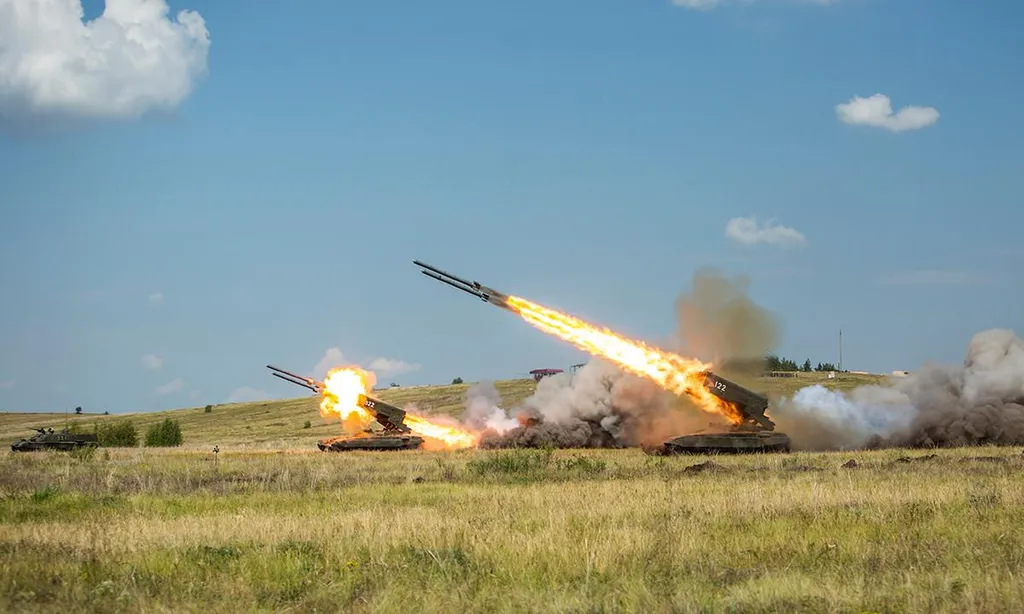Russia’s military modernisation reflects a strategic pivot towards agility, precision, and technological dominance. With a defence budget of around $70 billion annually, the country has transformed its armed forces into a versatile, mobile powerhouse—one that blends Soviet-era legacy systems with cutting-edge innovation. This evolution underscores a broader geopolitical ambition: to project influence far beyond its borders while maintaining a credible deterrent in an increasingly contested security landscape.
The shift from large, cumbersome formations to smaller, tech-driven units has given rise to a diverse arsenal of platforms, each designed to address specific operational challenges. From the skies to the seas, these systems exemplify Russia’s determination to remain a formidable military force.
At sea, the Bora-class hovercraft represents a unique fusion of speed and firepower. Part catamaran, part hovercraft, this vessel can reach speeds of 100 km/h while carrying eight Moskit anti-ship missiles and 20 anti-air missiles. Its ability to operate in shallow waters makes it a versatile asset for coastal defence and rapid deployment.
On land, the Pantsir-S1 air defence system provides critical protection for high-value targets. Combining short- and medium-range missiles with twin 30mm cannons, it can neutralise aircraft, helicopters, and incoming missiles with precision. Meanwhile, the T-90 main battle tank remains the backbone of Russia’s armoured forces, offering a balance of firepower, mobility, and survivability in contested environments.
Beneath the waves, the Novorossiysk-class stealth submarine marks a significant leap in Russia’s undersea capabilities. Its advanced acoustic shielding allows it to operate undetected, enhancing its ability to conduct covert missions. The Borei-class nuclear submarines, each capable of launching 16 Bulava missiles with multiple warheads, form the core of Russia’s sea-based nuclear deterrent, ensuring strategic stability in the face of evolving threats.
In the air, the MiG-35 fighter jet and the Tu-160 “White Swan” strategic bomber demonstrate Russia’s commitment to air superiority and long-range strike capabilities. The MiG-35, with its advanced radar and agility, excels in both air-to-air combat and precision strikes, while the Tu-160, the world’s largest combat aircraft, can carry 40 tonnes of weapons at supersonic speeds.
The Buk-2 missile launcher, though controversial due to its alleged role in the downing of a Malaysian airliner in 2014, remains a key component of Russia’s air defence network. Its ability to engage targets at altitudes of 14 km and speeds of Mach 3 underscores its strategic importance.
On the nuclear front, the RS-24 Yars intercontinental ballistic missile serves as a cornerstone of Russia’s deterrent strategy. With a range of up to 16,000 km and the capacity to carry multiple independently targeted warheads, it ensures Russia’s ability to retaliate against any aggression with overwhelming force.
The Mi-28 “Havoc” attack helicopter rounds out Russia’s military arsenal, offering day-and-night operational capabilities in nearly all weather conditions. Equipped with a 30mm cannon and missile pods, it provides critical support for ground assault and anti-tank missions.
This modernisation drive is not just about acquiring new hardware; it is about shaping a military that can adapt to the complexities of modern warfare. By investing in systems that enhance mobility, precision, and survivability, Russia is positioning itself to counter emerging threats while asserting its influence on the global stage.
As geopolitical tensions continue to rise, the development of these technologies will likely spur further innovation in the defence sector. Competitors and allies alike will be compelled to respond with their own advancements, creating a dynamic environment where technological superiority becomes a key determinant of national security. Russia’s military evolution is a reminder that in the 21st century, the battlefield is as much about innovation as it is about brute force.

